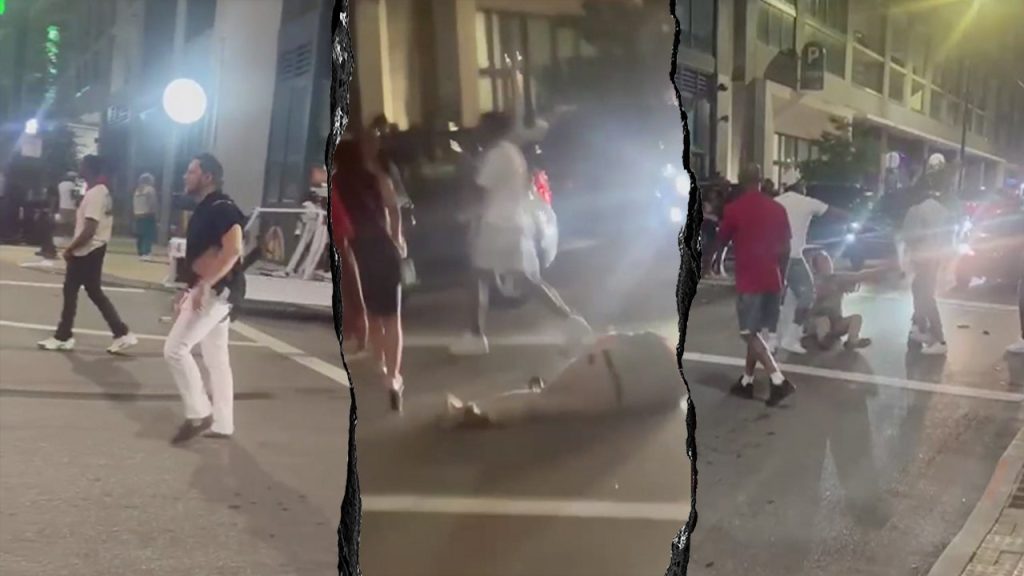Cincinnati Beating Aftermath: Charges, Investigations, and Community Tension
In the early hours of July 26, what began as a confrontation outside Cincinnati’s LoVe nightclub in the downtown business district escalated into a violent beating that has since sparked national outrage and local turmoil. The incident, captured on video and quickly spreading across social media, showed at least two White victims being brutally attacked by a group of Black suspects. The severity of the assault—where victims were repeatedly stomped while defenseless on the ground—has left one victim with significant brain trauma and thrust Cincinnati into a complicated conversation about violence, race, and accountability.
The aftermath has created a leadership crisis in Cincinnati, with Mayor Aftab Pureval facing severe criticism for his handling of the situation. His absence in the days following the attack led to the local Fraternal Order of Police unanimously voting no-confidence in his leadership. As the investigation continues, authorities have arrested several suspects, with charges ranging from assault to federal drug offenses. The most prominent suspect, 39-year-old Jermaine Mathews, described by prosecutors as the “coordinator” of the brawl, faces both state charges related to the beating and separate federal charges for drug trafficking. Despite his attorney’s arguments about community ties and lack of prior violent felonies, federal prosecutors successfully appealed a decision that would have granted him release while awaiting trial. Other key suspects include Montianez Merriweather, Patrick Rosemond (accused of nearly beating a victim named Holly to death, causing “very bad brain trauma”), Gregory Wright, Dominique Kittle, DeKyra Vernon, and Aisha Devaughn. While some remain in custody with bonds ranging from $100,000 to $500,000, others have been released with electronic monitoring.
Perhaps the most controversial element of the case involves Alex Tchervinski, a victim of the brawl who now faces disorderly conduct charges. According to his lawyer, Tchervinski was allegedly hit 28 times and robbed during the attack while trying to protect his girlfriend and a friend. Video footage shows him slapping one of the suspects, which his attorney claims occurred after Tchervinski had already been assaulted. His arrest has become a flashpoint between police and city leadership, with the FOP claiming the mayor ordered charges against a White victim “solely to appease racial tensions at the urging of a few community leaders.” This decision came after Reverend Damon Lynch demanded that victims also face consequences, stating at a press conference with the mayor: “When I see the mugshots, I only see people who look like me. I don’t see the person who re-engaged. And so until we see all the mugshots, this is still a racial issue.”
The tension surrounding the case highlights deep divisions within the community. Mayor Pureval, agreeing with Reverend Lynch, emphasized that “this public safety challenge, that this incident will require further investigation, further charges and further arrests for every single person involved.” The debate over who initiated the violence and whether the response was proportionate continues to fuel disagreement. Holly, one of the most severely injured victims, has shared her uncertainty about the extent to which she will recover from her brain trauma. She was captured in the viral video being knocked unconscious and falling onto the pavement at the intersection of Fourth and Elm Street. The impact on downtown businesses and residents’ sense of safety has been significant, with local business owners expressing concerns about crime and public perception.
While the investigation remains active with police searching for at least one more suspect, the incident has forced Cincinnati to confront difficult questions about public safety, racial dynamics, and justice. The severity of the charges reflects the brutality of the attack—most suspects face multiple counts of felonious assault, assault, and aggravated rioting. Some suspects’ criminal histories have become relevant in court proceedings, with Gregory Wright’s 22 prior arrests and felony convictions for heroin trafficking and illegal firearm possession influencing his $100,000 bond. Similarly, Dominique Kittle’s mental health history, including schizophrenia and previous findings of not guilty by reason of insanity, has complicated his case, with prosecutors nonetheless describing him as a “grave danger to the community.”
The Cincinnati beatdown case represents more than just a violent incident—it has become a lens through which broader societal tensions are being examined. As the legal process unfolds for those charged, the community continues to grapple with questions about racial dynamics, proportional justice, and public safety. For victims like Holly facing uncertain recovery prospects from traumatic brain injuries, the consequences of that night extend far beyond legal proceedings. Meanwhile, Cincinnati’s leadership faces the challenge of addressing legitimate public safety concerns while navigating the complex racial dynamics that have emerged in the case’s aftermath. With the investigation still ongoing and at least one more suspect being sought, this case continues to evolve, leaving lasting impacts on individuals involved and the broader Cincinnati community.


